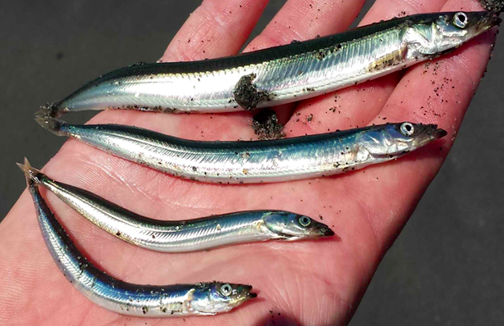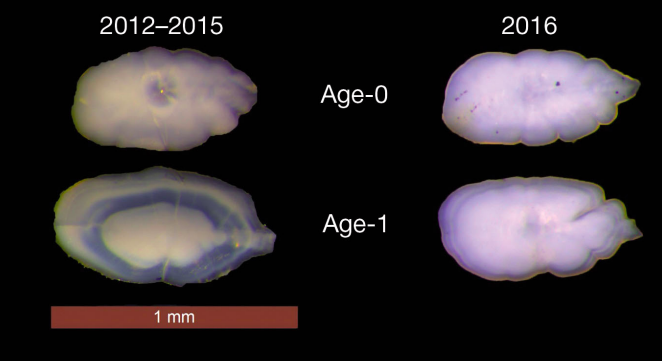Pacific Heat Wave Reduces Nutritional Value of Pacific Sand Lance
By Olivia Schuitema, SRC intern
A marine heat wave known as “The Blob,” lasted from October 2013 to June 2016 in the North Pacific Ocean (von Biela, 2019). Heat waves can have detrimental impacts with both immediate and lasting effects on the marine environment. These warm patches can produce bottom-up disruptions in energy transfer (von Biela, 2019). “Bottom-up” refers to an ecological concept where changes in the lower energy levels in a food chain affect the upper levels of that food chain as well.
A pivotal species in the Prince William Sound ecosystem are the key forage fish the Pacific Sand Lance (Ammodytes personatus) (Abookire and Piatt 2005). Sand lance are indicator species (species that help infer conditions of a certain habitat) that have strong residency and make minimal migrations, tying them certain habitat conditions (von Biela et al., 2019). They have direct connections to species in the upper levels of pelagic food webs including sea birds, marine mammals and larger predatory fish, some of which have conservation status or are targeted for fisheries (von Biela, 2019). Changes in stocks of sea birds and marine mammals have been linked to shifts in abundance of forage fish stocks (Robards, 2002).

Figure 1. Varying total lengths (TL) of Sand Lance, Ammodytes personatus (Source: USGS.gov)
Evidence suggests that abundance and growth rates of sand lance are related with certain environmental conditions such as marine productivity and water temperature (von Biela et al., 2019). Researchers examined the nutritional condition of sand lance in Prince William Sound within the 5-year warming period of “The Blob.” Sand lance samples were collected in the field and measured for total length. Back in the laboratory, otoliths (inner ear structures in teleost fish that aid in balance and orientation) were extracted from fish samples, dried and examined under light to see growth rings (von Biela et al., 2019). Otolith layers are similar to tree rings; age of fish can be determined via counting the number rings. Otolith growth size is strongly correlated to somatic size within fish species (von Biela et al., 2019). Determining whole body energy required drying out fish samples, pressing the dried remains into a pellet and weighing the pellet (von Biela et al., 2019).

Figure 2. Otoliths with dark bands representing periods of slow growth during heat wave (left), and otoliths with more opaque regions representing fast growth after the heat wave subsided (right) (Source: von Biela 2019)
Past studies indicated that sand lance grew slowest and were least abundant in warmer areas compared to cooler areas (Robards et al. 2002). Results of this study support past findings; with the higher temperatures during the heat wave, there was a decrease in total length and a decline in whole body energy in sand lance samples (von Biela et al., 2019). This suggests that with warming temperatures, sand lance must expend higher metabolic energy in order to survive, resulting in smaller size and smaller energy stores. In this type of domino effect, the warming temperatures then resulted in lower chlorophyll levels and lower nutrient levels, further contributing to the smaller fish size. These results mean less energy moving up the trophic levels, affecting the health of entire marine food webs. Shifts in climate and environmental conditions could have harmful effects on key species of forage fish such as the sand lance (Abookire and Piatt 2005). This important study could be a predictive snapshot into our future as global temperatures continue to rise.
Works Cited
Abookire AA, Piatt JF. 2005. Oceanographic conditions structure forage fishes into lipid-rich and lipid-poor communities in lower Cook Inlet, Alaska, USA. Mar Ecol Prog Ser 287: 229−240
Robards MD, Rose GA, Piatt JF. 2002. Growth and abundance of Pacific sand lance, Ammodytes hexapterus, under differing oceanographic regimes. Environ Biol Fishes 64: 429−441
Von Biela, R. Vanessa, et al. 2019. Extreme reduction in nutritional value of a key forage fish during the Pacific marine heatwave of 2014−2016. Mar Ecol Prog Ser 613: 171-182


